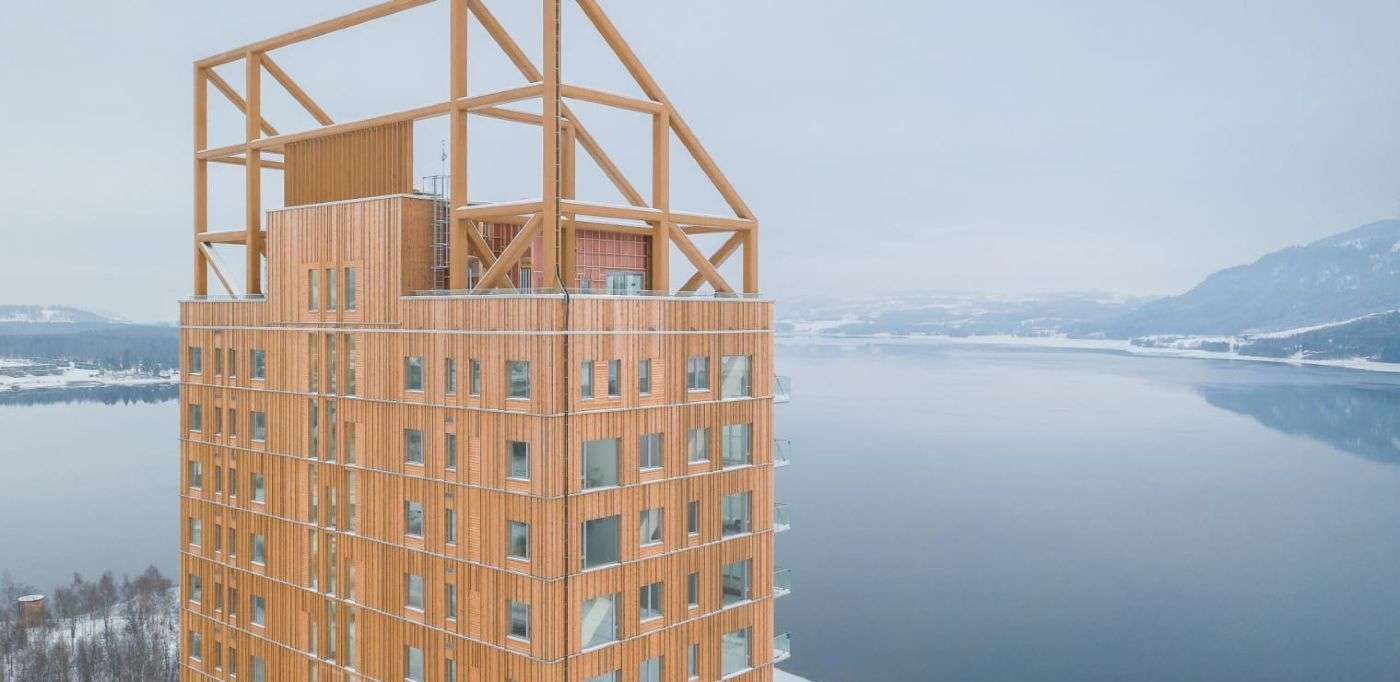Insert This On Your Bike Wheel to Filter the Air Pollution While You Cycle
Rolloe is an air filter fitted to the front wheel of you bicycle and removes CO2, NO2, and particulate matter from your city air.

Across the world, advancement in plywood technology is giving way to a slew of wooden skyscrapers aptly called ‘plyscrapers'.
These innovative towers are beginning to top 200 feet, with one ambitious project in Norway reaching 280 feet, while also creating less carbon emissions, and requiring less time to build.
The secret to these plyscrapers' survival and success comes down to a new way to create plywood, and it involves laminating boards of wood together with glue at 90-degree angles before pressing them together under the immense pressure and steam of industrial wood presses.
"This technology has changed the whole face of timber as a construction material," said Roma Agrawal, the structural engineer who built The Shard in central London, to The Economic Times. "It's a huge leap forward in terms of strength [paired with] massive advances" [in fire safety.]
The result, known as cross-laminated timber, or CLT, is part of a group of materials called mass timber, and thanks to changes in building regulations and a greater eye towards sustainability, they are now being used in ever-larger construction projects.
Buildings like the Terrace House in Vancouver (19 story), the HoHo in Vienna (24 story), the Ascent in Milwaukee (25 story), and the Mjí¸stí¥rnet in Norway-the tallest wooden tower in the world, wouldn't be possible without CLT and mass-timber technology.
However, while the thought of cutting down enough trees to replicate a famous skyline seems ridiculously climate-negative, considering the loss of carbon sequestration, the reality is that there are stages in the life of a tree when they become carbon emitters, rather than carbon trappers.
Trees don't always store carbon, and they don't always suck up more carbon than they emit. Natural storms can uproot trees, exposing their precious carbon-sequestering roots to decay.
Death by fire, disease, age, damage, or any other way causes a tree to lose a lot of its sequestered carbon, and produce more still from the fungi that break it down through the process of decomposition.
But when a tree reaches a certain age, it will have indeed sucked up a lot of carbon. By turning that tree into mass timber, the carbon cannot escape through natural processes, effectively making timber towers timber prisons, with carbon dioxide as the inmates.
"Trees store carbon, so if you harvest them at the right age when they can't absorb much more or grow much further, then it's a better solution to use them as a building material," says Voll Architecture's íystein Elgsaas, part of the team that built the Mjí¸stí¥rnet tower in Norway.
In a video call with CNN, Elgsaas expands on the idea by adding that: "It prolongs the trees' lifespans (by preventing their decomposition) by maybe 100 or 200 years, if done correctly."
The International Building Codes, used by many countries as a base for their own local building regulations, have just recently allowed for the creation of wooden buildings to reach 18 stories.
While 18-story wooden buildings haven't existed in modern times, it remains to be seen if planned towers such as Sumitomo Forestry's W350-a timber tower stretching 1,189 feet in the air, or London's Oakwood Timber Tower, slightly shorter at just under 1,000 feet, will ever be made based on current building regulations.
But new research on fire-resistance, strength, and other aspects that would have politicians and regulators raising eyebrows at CLT and mass-timber construction, as well as a flood of market support and falling prices for mass timber, paints a picture of a culture of timber tower construction that's preparing to catch fire in architecture firms around the globe.
Build Your Friends Up With the Good News and Share This Story With Them…
Be the first to comment